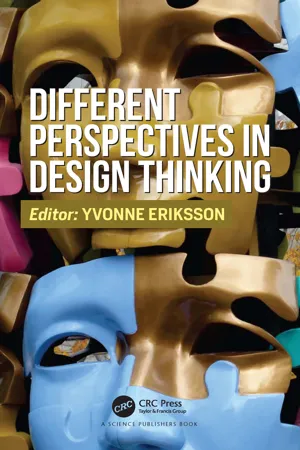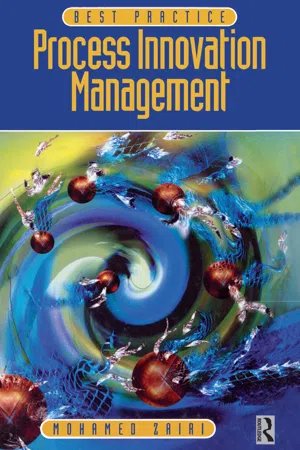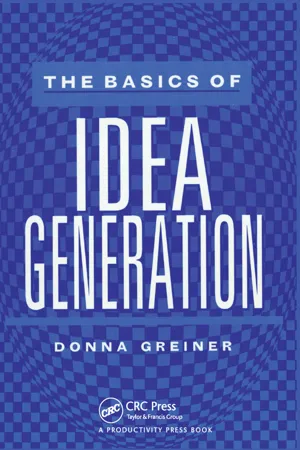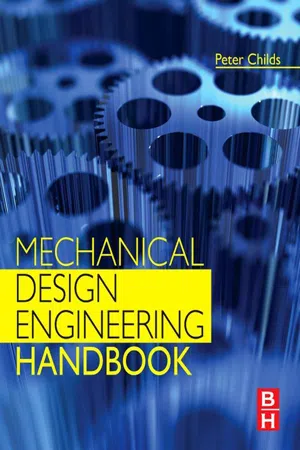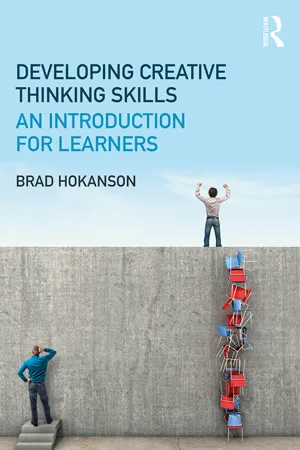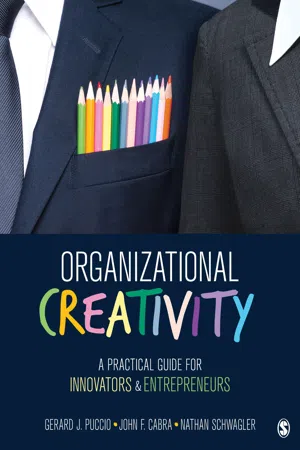Technology & Engineering
Ideation Techniques
Ideation techniques are methods used to generate and develop new ideas. These techniques often involve brainstorming, mind mapping, SCAMPER (Substitute, Combine, Adapt, Modify, Put to another use, Eliminate, Reverse), and design thinking processes. By using these techniques, engineers and technologists can effectively explore and develop innovative solutions to complex problems.
Written by Perlego with AI-assistance
Related key terms
Related key terms
1 of 4
Related key terms
1 of 3
6 Key excerpts on "Ideation Techniques"
- No longer available |Learn more
- Yvonne Eriksson(Author)
- 2022(Publication Date)
- CRC Press(Publisher)
Sproull, 2018 ).Ideate
The generation of concepts, ideas and attributes for the design solution characterizes what is termed the Ideate phase. Here, participants are encouraged to engage in divergent thinking to generate ideas, even wild ones embracing ‘magical thinking’ are welcomed. The emphasis in this phase is on abundance rather than completeness or feasibility of ideas in order to facilitate imaginative solutions. Typically, the entire DT team will outline concepts on Post-it notes in a rough picture format intended to avoid rationalizing or detailing every idea. This unleashing of creativity through divergent thinking is one of the key components of design thinking. The intentional open mindedness and risk-free environment for idea submission is intended to encourage the team to consider transformative rather than incremental design.This ideation activity is usually time-bound within a workshop setting so that evaluating the generated ideas is enabled to refine the thinking thus far. As participants describe and cluster ideas in themes or patterns of similarity, the team members try to improve the ideas by engaging in what are termed “YES, AND” statements. For example, ‘YES, a self-driving hovercraft will float over rough terrain, AND if you add 360° sonar, it will also be able to avoid obstacles. Such comments are designed to accentuate the value of one idea and help tweak it in a refined direction.Once ideas are reviewed and tweaked, the team enters a more convergent form of thinking to help focus attention on the best ideas. Generally, a voting process begins in order to galvanize consensus around which ideas seem to best solve the problem statement(s). The practicality of a physical workshop environment, with participants huddled around a wall of Post-it notes, can make it difficult to hear the descriptions or make sense of another person’s rapidly sketched concept. In this active and interactive milieu, convergence is generated usually by ‘voting’, whereby participants place dots on the ideas that seems to best fit the need. - eBook - ePub
- Mohamed Zairi, Richard Duggan(Authors)
- 2010(Publication Date)
- Routledge(Publisher)
3 Idea generation: creativeproblem-solving and innovation
Richard DugganThe best way to predict the future is to invent it. (Alan Kay, Apple computer scientist)This chapter examines tools and techniques for promoting creativity within business organizations. It begins with an extensive review of the creative process. First, the role of the individual as a creative entity is made, followed by a discussion of creativity within and between teams. The range of tools and techniques that can be used to enhance creative performance are highlighted. Coverage of creative problem techniques for the individual includes morphological analysis and problem redefinition and at the team level includes synectics, hitchhiking, creative listening and Taguchi techniques. The chapter also provides suggestions on how to run effective creative sessions, and addresses implementation. Illustrative examples and cases are widely used to enrich the discussion.Introduction and definitions
‘Creativity is thinking of novel and appropriate ideas.’ ‘Innovation is the successful implementation.’ These were the definitions presented by Dr William Coyne at the Annual Innovation Lecture in 1996. He was representing the pragmatic viewpoint of 3M, widely regarded as one of the most innovative and successful companies of the current era. These descriptions of innovation and creativity are close to those used by the Department of Trade (DTI) Innovation Unit: for example, ‘Innovation is the successful exploitation of new ideas.’ However, for the definition of creativity this author prefers to be slightly more conceptual: ‘Creativity is the ability to look where everyone else is looking and see what no one else can see’ (Szent-Gyorgi). This definition seems to link the needs of the business person, the scientist and technologist for new ideas and novel problem solutions, with the perspectives of the artist, musician and poet and, indeed, many others in the creative arts. - eBook - ePub
- Donna Greiner(Author)
- 2020(Publication Date)
- Productivity Press(Publisher)
CHAPTER 220 Ideation Tools and Techniques
USING THE 20 TOOLS AND TECHNIQUES
Whether developing new ideas alone or in a group, the 20 ideation tools and techniques that follow will serve as catalysts throughout the idea-generating process. These are all proven techniques taken from personal experience as well as from some of the world’s experts on creativity and ideation.As you use the tools, try each one at least three times before making a firm judgment about its effectiveness. Many of these activities will be new to you and may require some practice before you become comfortable with them.The 20 tools are presented in alphabetical order. Each is organized into a standard format for easy reference. The tools and techniques are portrayed in four sections beginning with a short description, which is followed by user instructions. When it is helpful, an example is provided to illustrate the tool’s use. Finally, the best applications for each tool are identified. Occasionally, one of the above sections is not applicable and in that case, that section is simply not included.A final tip: Relax, have fun, and become abundantly creative.BENCHMARKING
Description
Benchmarking studies compile information from various sources about the best practices of industry leaders. The objective is to compare your firm’s procedures and practices to the best available. Benchmarking generates ideas on how to improve your products and services.How to Use
There are several accepted benchmarking methodologies. (See Robert Damelio’s The Basics of Benchmarking - eBook - ePub
- Peter Childs(Author)
- 2013(Publication Date)
- Butterworth-Heinemann(Publisher)
For example, some of the brainstorming tools such as the Post-it, alphabet and grid processes can be useful in the early phases of a project and whenever progress is blocked. Some organizations are serial users of brainstorming, such as IDEO (Kelley, 2001), and over 70% of businesspeople use them in their organizations (Anderson et al., 2004). The creativity problem-solving process has been validated extensively and provides a valuable framework for tackling a challenge and developing ideas. Other tools such as morphological analysis can be used to aid the development of ideas based on functional analysis of the subsystems. The theory of inventive problem solving provides a shortcut to experience. It is suggested that regular use of these tools within the engineering design activity can aid significantly in the generation of ideas. References 1. Allen MS. The Allen Morphologizer. Prentice-Hall 1962. 2. Altshuller GS. Creativity as an Exact Science — The Theory of the Solution of Inventive Problems. 1984; New York. 3. Altshuller G. And Suddenly the Inventor Appeared: TRIZ, the Theory of Inventive Problem Solving. (L. Shulyak, Trans.) Technical Innovation Center, Inc 1994. 4. Altshuller G. 40 Principles Extended Edition: TRIZ Keys to Technical Innovation. Technical Innovation Center 2005. 5. Anderson A, Heibeler R, Kelley T, Ketteman C. Best Practices Building Your Business with Customer Focussed Solutions. Kindle ed. Touchstone 2004. 6. Atkinson RC, Shriffin RM. Human memory: a proposed system and its control processes. In: Academic Press 1968;89–195. Spence WK, Spence JT, eds. The Psychology of Learning and Innovation: Advances in Research and Theory. vol. 2. 7. Bauer L. Introducing Linguistic Morphology. second ed. Georgetown University Press 2003. 8. Buzan T, Buzan B. The Mind Map Book. BBC Active 2006. 9. Childs PRN. CETL in Creativity Annual Report 2005–2006. InQbate: University of Sussex; 2006a. 10. Childs PRN. Mechanical Design. second ed - eBook - ePub
Developing Creative Thinking Skills
An Introduction for Learners
- Brad Hokanson(Author)
- 2017(Publication Date)
- Routledge(Publisher)
8 Techniques for Idea GenerationThe hardest ideas to get accepted by others are the brilliant ones, just because they are creative and fly in the face of what everyone else seems to know is true. —Robert Sternberg and Todd LubartThere’s no magic set of tricks to end up with the single creative answer, whether for an everyday problem or for a defined problem or task at work.In order to take advantage of our internal skills in addressing challenges, it is helpful to know and be able to use creativity techniques or skills for use. This is the knowledge aspect of our four-part structure of beliefs, habits, skills, and knowledge.Creative techniques for generating more ideas are common and work in different ways to encourage divergent thinking. As we have seen earlier, we can simply seek more ideas by practicing the production of new ideas, changing attitudes toward new ideas, and developing a habit of generating multiple ideas. We can also build more ideas and more diverse ideas through the use of structures or methods. Some creativity protocols can force diligence in developing ideas as well as encouraging the inclusion of divergent directions. We can learn to move past the limits of our current mental resources, to increase stimulation and experience, and to connect with others by adding new inputs. These include changing habits for learning and seeking challenges and new social and cultural environments. There are a lot of different ways to help you generate more ideas. While it’s important to understand various processes, only a few methods are covered in this book. See the “Resources” chapter to a link for a wider range of techniques.Do methods for idea generation make you more creative, or are such ideas like swim fins: making you swim faster but not a better swimmer? Initially, yes, the ideas outlined here will make you appear to be more creative, but then, with continued practice and internalizing the methods, you will actually be more creative. You will be, to use our metaphor, a better swimmer. - eBook - ePub
Organizational Creativity
A Practical Guide for Innovators & Entrepreneurs
- Gerard J. Puccio, John F. Cabra, Nathan Schwagler(Authors)
- 2017(Publication Date)
- SAGE Publications, Inc(Publisher)
12 Not surprisingly, as a deliberate creative process, the stages associated with design thinking closely parallel the universal steps of the creative process outlined earlier (i.e., Clarify, Ideate, Develop, and Implement). Boiling it down to its simplest form, design thinking can be outlined in the following way: first, empathize with users by understanding their needs and issues; second, define the specific opportunities and challenges that emerge through an understanding of users; third, generate solutions that respond to these opportunities and challenges; and fourth, create prototypes of the best solutions and refine them by soliciting feedback from user groups.To best promote the creative-thinking skills of our readers, we have created a mash-up of the creative process. That is, we took the best of the cognitive models proven to enhance creative thinking (i.e., Clarify, Ideate, Develop, Implement) and married this to some of the most powerful features of design thinking (i.e., Empathize, Define, Ideate, Prototype). Our creative process mash-up merges the strengths of these two powerful models—creative problem solving’s flexible application to a wide range of organizational challenges with design thinking’s focus on the development of new product concepts and services. Through this mash-up, our goal is to help you maximize your creative-thinking skills in a way that positions you as an innovative asset to your organization, either as an intrapreneur or entrepreneur. This mash-up is presented in Figure 5.1 .For our purposes, the four steps of the creative process mash-up are Understand, Ideate, Experiment, and Implement. In the first step, the goal is to closely observe a situation to define the most important opportunities and challenges to be addressed. In the second step, Ideate, the insights gained from this understanding are used to visualize and generate a range of creative ideas. These creative ideas must be refined into great solutions. The purpose of the third step, Experiment, is to develop the best ideas and to validate their appropriateness. For innovation to occur, creative ideas must be put into action. The final step, Implement, is aimed at getting buy-in for the proposed solution and making this proposed change stick.
Index pages curate the most relevant extracts from our library of academic textbooks. They’ve been created using an in-house natural language model (NLM), each adding context and meaning to key research topics.
Explore more topic indexes
Explore more topic indexes
1 of 6
Explore more topic indexes
1 of 4
